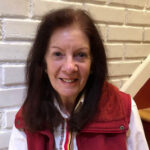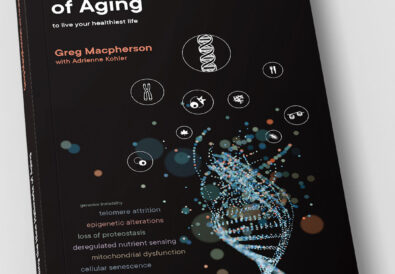The Island endures rich with its offerings, one of which is the sound of cove music as the wind breezes in through the grass harps along the edge of the Sunken Meadow. The soft steady notes of those musical reeds helps to lull Catherine to sleep. At dawn, its magical chime helps draw her from bed. There are times, however, when the reeds, like Catherine are crushed and gagged by a storm. This morning, swells raged across the Island’s straits, and pushed the menace way inland.
Turning and tossing like the flotsam and jetsam now weathering wave after wave, Catherine’s body fought its way up from a sleep offering no rest. Her arms reached out from under the weight of a thick army blanket, a relic from her father’s war days. She pushed back her fair colored hair, and reached for her phone. She checked the time. Still holding the phone, she dragged herself towards the room’s only window. Looking through it she saw that above the row of suburban roofs facing her parent’s house a muster of grey clouds had robbed the sky of most of its light. She shivered and rubbed her arms for warmth. Nineteen, jobless and still living at home. No one understood her. She didn’t understand herself. Today, despite the storms that raged inside herself and across the Sound, she would go to The Center for help. The Center recently opened an office on the Island. There she would learn about The Polyvagal Theory and how it helped those in need of healing from trauma.
The clothes she would wear to The Center were the ones she wore most days, baggy grey sweat pants and a plaid flannel shirt. She passed a comb through her hair, the ends of which a friend helped dye magenta. The same friend had told her about The Center, “they’ll help you deal with your stuff.”
Angry voices shouted back and forth in the kitchen. She’d skip breakfast. She looked back at the window, and checked the weather forecast on her phone.
Catherine left the house with little more than enough money for the bus. Rain clouds hung lower and darker. She had doubts. Her stomach ached. The bus arrived. She climbed the steps of the bus and dropped coins into its meter. She slumped into a seat and wondered what they would ask her at The Center. How much would she have to tell them? Her right eye twitched. She covered it with her hand and strained her other eye to look past the raindrops now pelting her window. She didn’t want to talk about ugly stuff.
By the time the bus reached The Center, storm-water, polluted with cigarette butts and foam coffee cups ran high along the curb. One giant step got her from the bus and over the waste stream and onto the cement sidewalk. Seagulls, winging in from the Long Island Sound to escape the storm’s strong winds circled overhead. Lost in her thoughts, she continued towards The Center as oblivious to the gulls as to the rain pounding her head and shoulders. When she reached The Center, Catherine shrank from the huge glass and golden door. She stood tempted to turn back, but along with a sudden gathering of people eager to get out of the rain she found herself swept into the building and dripping rain onto the carpet as she approached the receptionist’s desk.
A therapist, a middle-aged man with gray hair curling softly at his temples noticed her entrance. The slump of her shoulders and the movement of her eyes, which were cast downwards except for the few sideways and forward glances she took, had caught his attention as he readied to leave his office. He overheard the receptionist speaking with Catherine. He approached them and said that he’d be willing to delay his lunch. He turned towards the younger woman and with a smile asked her name.
“Catherine,” she said, hesitant to look at the therapist.
“Hi, Catherine, I’m John. My office is right over there,” he said with a show of concern in his voice as he smiled.
When they were inside his office, he motioned for her to sit. She chose the chair opposite his. John told her it was brave of her to walk in without an appointment. He glanced at his office window and said, still smiling, “I think the storm may be letting up.”
Although Catherine really wanted to smile back, she replied instead with a cautious slight shrug of her shoulders. A brief silence followed. She had second thoughts. Meanwhile, John wondered how committed she would be.
Catherine took a deep breath and dabbed at the tears starting to gather at the corners of her eyes.
“Catherine,” he said, removing his glasses so that their eyes may more fully meet, “its ok to cry.”
Catherine raised her eyes to his and then lowering her eyelids began to softly sob. John waited a moment and then asked her how she knew about The Center.
“A friend from school. She had problems, she came here and got help,” said Catherine. John noticed the bruise on her cheek. She noticed that he noticed and put her hand over it.
“Catherine,” he said, “sometimes, when people experience trauma, they shut down. Mindless coping strategies, like doom strolling through social media or binge-watching television series, or turning to addictive substances, like food, alcohol or drugs are of no use. Here we offer an alternative to them, as well as to prescription medication.
Her face flushed. Her heart beat faster. To help ease her further into their discussion he suggested that she draw a deep, slow breath. As she did so, a sliver of light from the sun inched its way through a gap between the dark clouds. She took another slow breath, and with that she relaxed and no longer sat perched at the edge of her seat. He asked her how she felt.
“Better,” she replied.
He explained that she, like most people weren’t aware of changes in their breathing during stress and that when they became aware they could use their breath to intentionally help themselves. She listened as he explained that at The Center they understood trauma, anxiety, and other stresses in biological terms of retuning the nervous system, which he called the Polyvagal System, with the use of special exercises.
“This system,” he said, “is also referred to as the autonomic nervous system, and it determines how you experience life. With self-compassion and self-awareness along with the polyvagal exercises, you can improve the quality of your life. One of the first exercises we teach here is how to use your breath to calm your nerves.”
John would teach her how to identify what was going on in her body. She would learn how to reset her nervous system from panic to calmness with methods such as meditation, diaphragmatic breath work and anchoring in safety.
Catherine now understood that the healing approach used at The Center was focused more on how the nervous system processes stress and not on talk therapy. “When you are capable of helping your body process its response to stress, you’ll be better able to explore the reasons that brought about your distress,” he said.
John told her to take a few more slow deep breaths. When she did so, a safe warm feeling swept over her. The blue of Catherine’s eyes brightened and her shoulders relaxed. He noted the change in her and asked her how she felt.
“It’s important to be aware of how we feel, not just emotionally but physically as well,” he said. “Describe what you just felt in your body.”
She told him about the soft feeling around her heart, and a gentle tingling along her arms towards her fingertips, and that it felt good. He explained that her nervous system had shifted from anxiety to safety.
“You can create such shifts intentionally,” he said. “For example, if you felt a panic attack coming on and did some deep breathing you could shift your nervous system from an anxious state to a calm one. Whatever polyvagal exercise you do, whether it’s a breath exercise or a safety cue meditation, you must do it mindfully. Without mindfulness it’s difficult to maintain control of your intention. Do you get what I’m saying,” he asked.
She nodded her head and with a smile sighed, a sign that she had experienced a moment of insight, that for her, things were about to change.
When she left the Center, she noticed that the sun was steadily regaining its stature, reigning over the Island with the radiance of its warm golden light. The seagulls playfully flapped their way back to the beaches. The air had cleared. She got on the bus. She felt hopeful, actually more than hopeful, she felt the start of reconnection to herself and a world she once thought permanently lost. She also realized that another shift inside her had taken place. And with that she felt a sense of inner power and strength.
 Diane Lundegaard ©2024
Diane Lundegaard ©2024




















